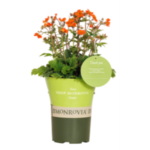Does It Pay To Have A Web Site?
Many people may ask themselves these days if it really matters whether or not they are on the Web. Long gone are the days when a company could add a dot-com to their name and be guaranteed favorable publicity or succeed on the Internet. The pendulum has swung so that now “dot-bomb” has replaced “dot-com” as the latest buzzword. Numerous high-profile and not-so-high profile nursery or green-related companies have folded in the past few years: garden.com, etera.com and e-greenbiz to name a few. As if the industry’s woes are not enough reason for caution, many business leaders have fears about Internet security and high costs two of the main reasons businesses cite for not having a Web site.
Those who do have sites are not always so thrilled with the results either. About 30 percent of the 647 small businesses surveyed by Dun & Bradstreet Corp. (D&B) in 2000 said they had their own Web site, but more than half said the Web has had “no measurable impact” on their business. There were even signs of a small-business retreat from the Web: D&B reports the number of small businesses that advertised on the Web fell 10 percent in 2000, and Verizon Information Services found the growth of new Web sites by small companies is slowing.
But before you dismiss the Internet, consider this: Far from the public spotlight, the Web is still quietly working for many businesses. Effective use of interactive marketing can go a long way toward increasing your business. The following are a few tips to help you better utilize the two most popular forms of interactive marketing: Web sites and E-mail.
Develop A Plan
A good Web site or interactive strategy is based upon a few clear objectives. These objectives are what drive your entire strategy and help determine how you will allocate your resources. They also help determine how you will design your Web site/E-mail campaign and the type of content you should use. For example, what do you want your site to do? Will it be a site where users can research gardening tips and advice? Or is your site going to be simply “brochure-ware”? These sites are basically online brochures that list your store hours, key contact numbers, a few store photos and possibly location maps and coupons. The other extreme would be a transactional site where users can actually view and purchase nursery supplies or products online. You could also add personalization technology so the site would remember return visitors and suggest items based on their interests and buying patterns.
Another extremely important part of your interactive strategy is identifying the proper target market. Obviously, a site designed for casual home gardeners is going to contain different content than one built for independent nursery operators. Don’t forget about budget and on-going maintenance considerations for your project. It makes little sense to try and build a personalized transactional Web site if you only have $5,000 for development and on-going maintenance. It is better to be realistic at the outset of the project and develop your site with the above considerations in mind than have to rework it halfway through or worse, see it fail due to lack of foresight and funding.
Once you have your objectives developed, your target market identified, and a good handle on your budgetary and on-going maintenance concerns, it is time to step back and determine the proper communications vehicle.
The Appropriate Technology
Any number of on or offline tactics may be appropriate for your needs, depending upon the situation. Within the constraints of this article it would be impossible to list the many factors to consider when choosing a communication vehicle; however, the following points may help you better understand how Web sites and E-mail marketing can fit into your overall communication mix. These points assume a large portion of your target audience has access to the Web or E-mail and uses the appropriate communication vehicles on a regular basis.
Web Site Development. A Web site can be an excellent tool to supplement your offline marketing. You can use your site to establish your expertise on a particular topic or provide in-depth information on your products or services. Additionally, digital video, flash animations and detailed photography are great ways to tell your story. Although these technologies can be used in E-mail communications, they are best suited for display via the Web.
A well-maintained Web site is accessible 24 hours a day, 365 days a year to answer customer questions and develop sales leads. When planning and developing your site don’t forget about the on-going costs necessary to keep your site running all the time. Depending upon the site, you may spend tens of thousands of dollars on site maintenance and enhancements.
E-Mail Marketing. E-mail marketing involves sending interested parties E-mail messages that contain relevant information. These messages may or may not contain supporting graphics or photos. You can use E-mail marketing to inform your customers of upcoming specials, price promotions or new products and services. The start up and ongoing costs of an E-mail marketing campaign are usually less than those of a Web site.
You might also want to consider developing an E-mail newsletter. This ongoing communication vehicle is a great way to stay in touch with your customers. For example, you could discuss the pros and cons of a different plant every month or talk about the merits of various types of fertilizers.
Any good E-mail marketing campaign is based on a good list of E-mail addresses, but beware of purchasing another company’s database. Although many firms promise to provide only qualified leads, results can vary widely from list to list. For example, some of the addresses may have no interest whatsoever in gardening, thereby increasing your cost per response. Furthermore, you don’t want your business labeled a “spammer” for sending out unsolicited E-mails.
If you are trying to develop an in-house database, ask for your customers’ contact information via your Web site. You may be able to solicit this information by offering customers a freebie such as a product catalog or by providing free advice (i.e., sign up here for 10 tips to remember when choosing a pesticide). You may also want to ask for your customers’ E-mail or mailing addresses in your store at the point of purchase.
Build Or Buy?
One of the most basic decisions Á you will need to make is whether to build your own Web site/E-mail campaign or purchase these services from a third party. This decision will obviously depend on how comfortable you are dealing with interactive communications and how much experience you have in-house. In general, the more elaborate or sophisticated your goals are, the more likely you will need to outsource.
If you plan on undertaking your interactive marketing effort in-house, there are a number of tools that may assist you. Web authoring tools such as Microsoft’s FrontPage or Macromedia’s DreamWeaver can help you build a basic Web site. Hopefully, your Web site will contain engaging graphics and photos for your visitors, so you may want to try using Adobe Photoshop or Macromedia’s Fireworks to construct your graphics. Very basic E-mail campaigns can be conducted using most E-mail software; however, if you wish to conduct E-mail campaigns on a regular basis, you may want to investigate dedicated E-mail programs like mailworkz’sbroadc@st.
Conducting your own E-mail campaign or building your own Web site does require you to make an on-going investment in equipment and training. Many businesses decide to go through a third party to meet their interactive-marketing needs. If you do decide to utilize a third party, there are a few things you should keep in mind:
- Some firms specialize in the implementation of an existing interactive-marketing plan (they build the sites), others help develop the strategy and tactics that go into a good plan, and still others do both. Make sure the company you choose has the skills to meet your needs.
- to see examples of the firm’s interactive projects. Are these examples similar to what you want for your business? Are they much too simple or much too complex for your needs?
- How long has the vendor been in business? Be wary of firms that have only been in business for a short time or that don’t have a fairly large customer base or client list.
- How does the third party bill their work? By the hour, by the project, by the measurable results of the project? Make sure you completely understand this process..
Of course, there is no guaranteed recipe for success in today’s competitive environment. To be sure, many small businesses have failed online and some will continue to do so; however, there are still many companies that continue to test the waters of E-mail marketing and Web site development. The successful firms will develop a plan, investigate their tactical options, and choose the technology and strategy that is best suited for growing their business.


















 Videos
Videos





